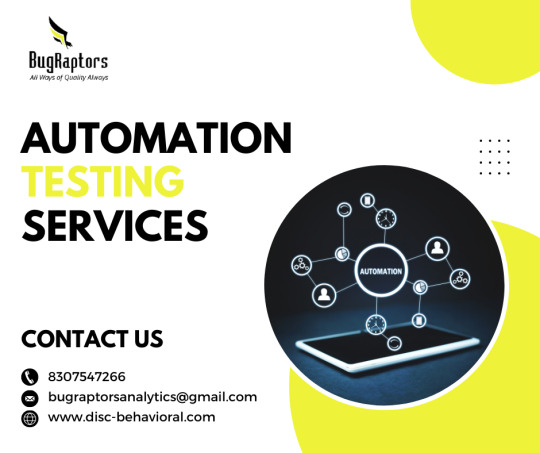#automation testing service provider
Explore tagged Tumblr posts
Text

Get peace of mind knowing that your software is bug-free with our automation testing services. Our expert team ensures robust test automation frameworks for seamless testing processes. Contact us today for reliable and scalable solutions.
1 note
·
View note
Text

#mobile test automation service provider#automation testing service provider#test automation company
0 notes
Link
Looking for Automation Testing Service in Australia? Answer is Shiv Technolabs - Best Automation Testing Service Provider in Australia, providing full Automation Testing Services, their team of software testing experts have high skilled in multiple technologies for best testing solutions. Contact us for Hire.
#Automation Testing Services#Automation Testing Agency#Automation Testing Service Provider#Automation Testing Services in Australia#Best Automation Testing Services in Australia#Hire Automation Testing Experts Australia
0 notes
Link

Shiv Technolabs Pvt. Ltd. provides a vast variety of test automation Testing services with Automation testers to achieve your goal and increase your performance throughout the lifespan of software Software Test Automation Service is not about the “done by one time” solution. It needs a lot of customization and careful choices in line when the product is under test. the test constraints, market, user base amongst other factors.
We have been successfully helping several clients get past the automation conundrum with our planning and Automation Testing services in this space. We would be excited to talk to you if this is an area you need help with.
#Automation Testing Service Provider#Automation Testing Services#Automation Testing Company#Automation Testing Solutions
0 notes
Link
#automation testing service provider#automation testing services#managed testing services#manual testing service provider#manual testing services
0 notes
Text
BugRaptors: Your Trusted Partner for QA Engineering Excellence
When it comes to quality assurance, BugRaptors is the name to trust. Their QA engineering services are designed to enhance the reliability and functionality of your software products, providing comprehensive testing and quality improvement solutions for companies globally.
#qaservices#qasolutions#softwaretestingservicescompany#automation testing service provider#automation testing services#QA Testing
0 notes
Text
Consistency Across Platforms: A Deep Dive into Cross-Browser Testing Techniques
Explore the importance of cross-browser testing in web development and ensure a seamless user experience across various browsers. Learn strategies for consistency in different web environments, ensuring your website performs flawlessly for all users. Dive into tips, tools, and best practices to conquer the challenges of cross-browser compatibility and deliver a superior web experience.
#cross browser testing#web testing service#automation testing service provider#software testing#qasolutions
0 notes
Text
Your Premier Mobile Test Automation Service Provider
In the fast-paced world of mobile app development, ensuring a flawless user experience is non-negotiable. We're not just another mobile test automation service provider, we're your trusted partner in achieving mobile app perfection. Boost your app's quality with BugRaptors today!
#mobile app testing services#Mobile Test Automation Service Provider#Hire Tester for Mobile Test Automation#Mobile Test Automation Services#Automation Testing Service Provider
0 notes